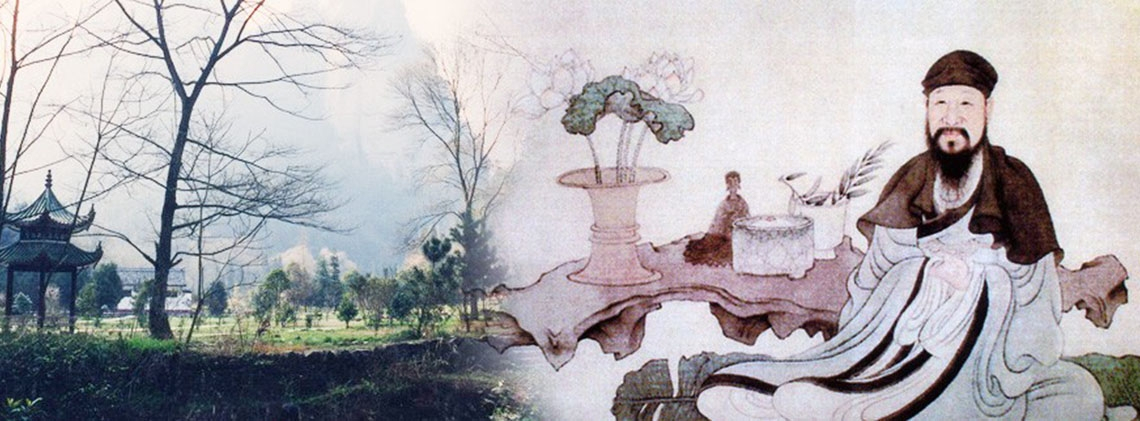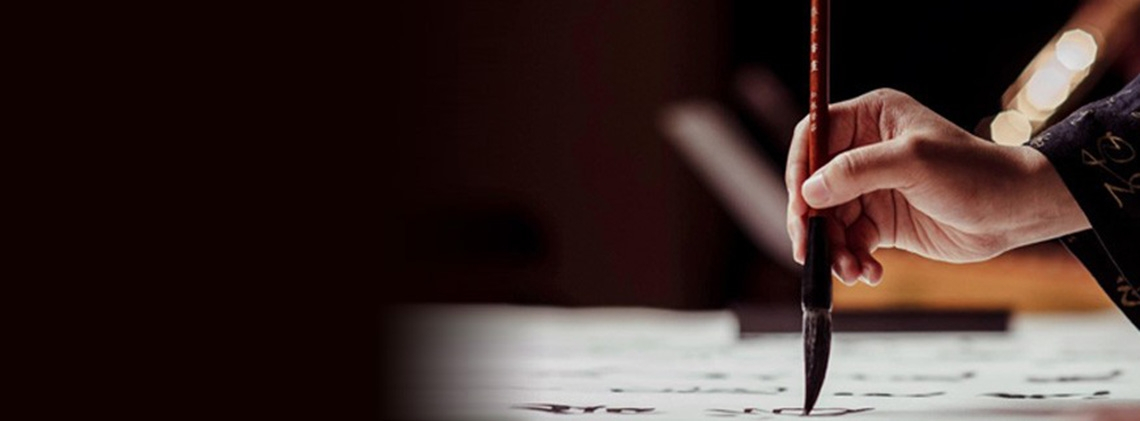
The Calligrapher Sage Wang Xizhi
Splendid
Chi Culture
Topic
The Calligrapher Sage Wang Xizhi
Wang Xizhi (ca. 303–361), style name (zi) Yishao, was born into a family of officials. His ancestral home was Linyi in Langya commandery (modern Linyi, Shandong). His grandfather, Wang Zheng, served as the imperial secretariat gentleman, and his father, Wang Kuang (fl. 305–318), was the governor of Huainan. His uncles held prestigious positions in the military and civil service: his uncle Wang Dun (266–324) was a general, and another uncle, Wang Dao (276–339), was the minister of education. They were both powerful and influential individuals, and were good calligraphers. Wang Xizhi was considered a clumsy speaker, but he was an excellent calligrapher who diligently practiced. He practiced so much and washed his brushes so often that it was said that the water in the nearby pond turned black from ink. He was so well grounded in calligraphy that he was remembered for all time as the “Sage of Calligraphy.”
Like the other men in his family, he took official positions but he was not obsessed with official service. In his later years he resigned from office and never served again. One of the main reasons for this is that by devoting his life to calligraphy he could fulfill his predestined calling. Thus, he devoted his entire life and energy to calligraphy, and in this way achieved the highest acclaim as “Sage of Calligraphy.” He was known everywhere for his talent and his writing commanded fabulously high prices. Everyone from the emperor to the commoner revered him for his calligraphy.
Wang Xizhi’s urbane “Wei and Jin manner” is the trademark of his personality and aspirations. It was his character that steered his calligraphy to an extraordinary, unique high standard. The large quantity of writing paper available during the Wei (220–265) and Jin (265–420) period provided artistic space for unfettered calligraphic creation. The introduction of Buddhism, and the integration of Ruism, Daoism, Buddhism, and abstruse learning induced literati to pursue “pure conversation” and abandon themselves to nature, and in this inspiring environment calligraphers were mentally prepared for the flourishing of calligraphy. Meanwhile, many calligraphers began self-consciously to theorize about calligraphy. They not only were engrossed in practicing calligraphy, they were also enthusiastic about theorizing about the art form. Rulers were extremely fond of calligraphy, and thus the pursuit of calligraphy and appreciating its artistic charm became an aesthetic vogue during the Wei and Jin period.
The innovation and contribution of Wang Xizhi’s calligraphy fall into three categories. First, he turned the plain and unadorned calligraphic style of the Han (206 BCE–220 CE) and Wei periods into something natural and graceful, while also attaching importance to the natural flow of the calligraphic line. Second, he brought to the acme of perfection the “harmonization” of the beauty of personality and calligraphy which in the Wei-Jin period stressed “not being excited or agitated, and letting one’s manner and style reach afar on their own.” This concept perfectly accords with the idea of the “beauty of central harmony” that in the traditional Chinese cultural spirit emphasizes unity in diversity. Third, by emphasizing yun (lingering charm, expressive tone, vitality) in calligraphy, he made calligraphy into an art that emphasized personal disposition and temperament so that it became an art that expresses one’s mind and sentiments, and naturally displays one’s spirit and feelings.
Wang Xizhi’s most famous work is the “Lanting Preface” (Lanting xu, or “Orchid Pavilion Preface”), which he wrote in the year 353. He was fifty years old and on the third day of the third month, hosted a gathering for both his friends and his sons, some forty-two people altogether. They gathered at the Lanting post station in Shanyin (modern Shaoxing), Kuaiji to celebrate the Spring Lustration. For centuries, literati paid great attention to this festival. Guests would enjoy wandering among the mountains and the bamboo forests. A favorite pastime was setting cups of wine adrift in a winding canal; whoever drank the cup of wine that stopped by him was required to compose a poem on the spot. The gathering lacked for nothing: it was held on an auspicious day, among beautiful scenery, and was pleasant and enjoyable. The poets could not help but feel that life and the universe were in accord. Slightly drunk, Wang Xizhi took up his brush and expressed his most profound sentiments in the elegant and beautiful “Lanting Preface.”
It seems that the entire piece was written in free style—rules without rules—but the strokes of each character are full of vigor. With mind and hand coordinated, he accomplished his writing in one breath. It is like a heavenly steed soaring across the sky. The preface includes distinctive styles of script: seal, clerical, and draft cursive. With the tip of the writing brush, Wang Xizhi employed various techniques to write a character: initiating the starting point, turning around a corner, lifting up the brush, and pushing down the brush—his thought follows his brush, and the strokes are like floating clouds and coursing streams. The characters are in diverse styles, and include both standard and cursive script. The characters are written in a steady and firm way, but some precipitous [or jagged?] strokes are included as well. The same character was written in several ways. For example, the entire preface includes more than twenty examples of the character 之, each one written in a unique style—none is identical. The state of mind of the entire piece is simple and vigorous, the spirit is expressive with keen insight, natural, elegant, and bright—just like a cool breeze and bright moon. Feeling both joy and sorrow one comprehends profound principles of life. It can be said that the state of mind meets the spirit, as if one is touched by true vital energy.
Wang Xizhi’s calligraphy has been held up as an epitome of the Chinese cultural spirit. This is on the basis of his unique and innovative techniques that also fully acknowledged the best of Chinese classical culture. Though Wang Xizhi’s calligraphy sometimes ran afoul of cultural commentators, it has occupied a revered position ever since Emperor Taizong (r. 626–649) of the Tang, Li Shimin (599–649), wrote in his disquisition on the “Biography of Wang Xizhi” in the Jin shu (History of the Jin): “Having thoroughly examined ancient and present times, and having carefully studied the seal style calligraphy written on white silk, I find there is only one person who reaches this acme of perfection: Wang Yishao! Observing his technique when he writes a dot and draws down a stroke, the splendor of the patterning is like diffuse mist and congealing dew, giving the appearance of being both broken off and yet connected/ Like a soaring phoenix and a coiled dragon, the strokes appear to be slanted, but are actually straight. Though long savoring it, one will never weary, and viewing it one can never know its beginning. My heart admires and my hand pursues only this person. The rest [the work of other calligraphers] are trifling writings hardly worth mentioning.”





